
Cape Breton Headlands
July 13th, 2015
Some of Mike's photos from the headlands of Schooner Pond and White Point.
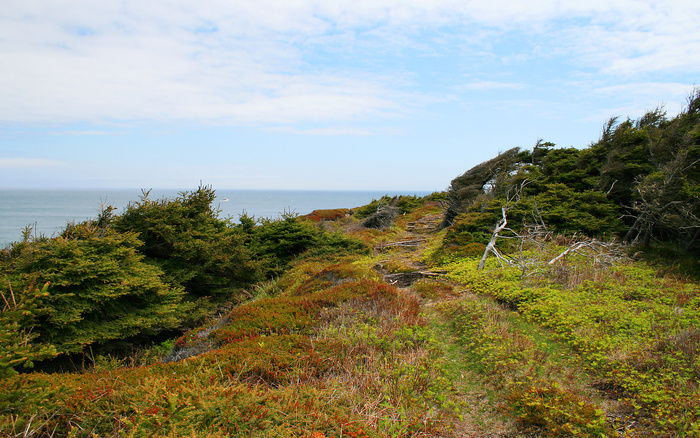
Check out that tree at the back.
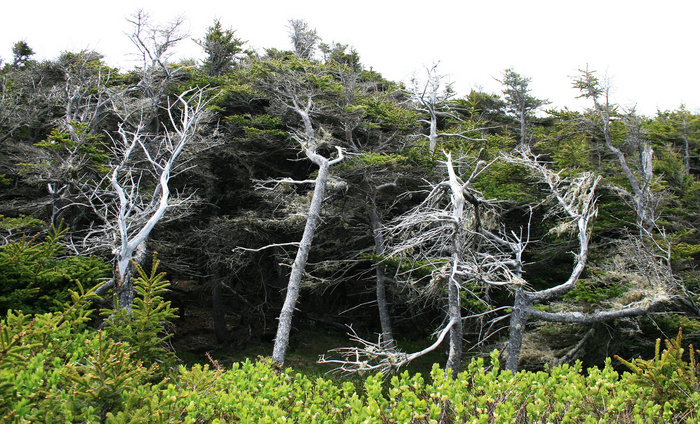
I remember trees like this in old Sierra games. If you got too close to them they ate you.
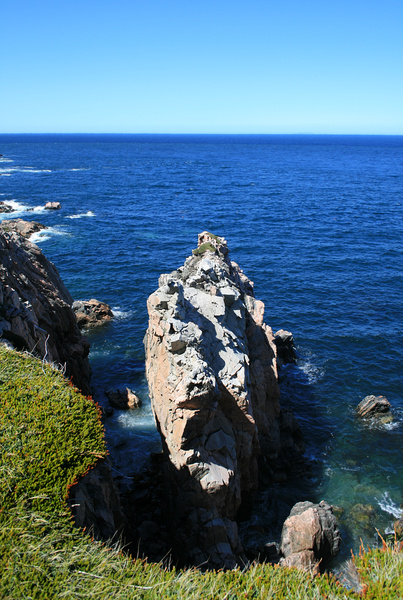
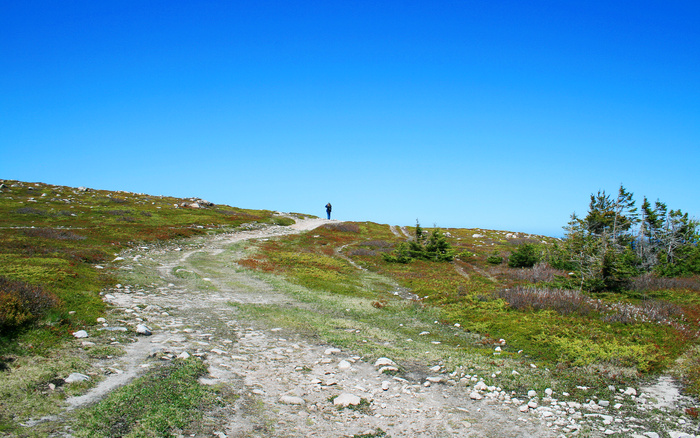
That's about as close as I want that camera lens to me, thankyouverymuch.
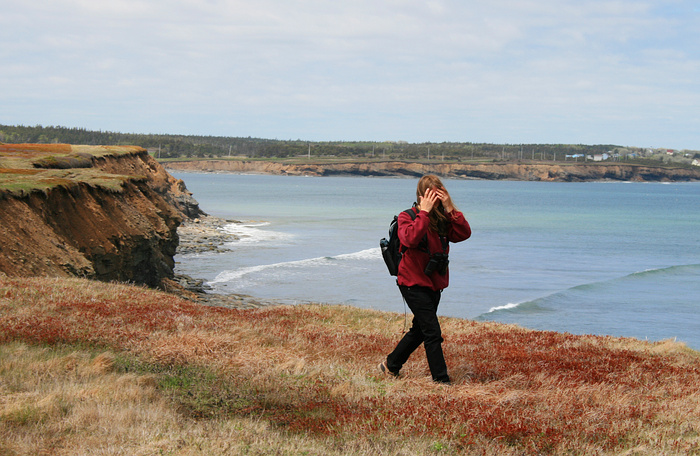
Oh no you don't.
This is it for our Cape Breton photos, barring any that Mike may choose to post on his own blog. My triplist follows.
( All the birds )
Highlands Park Vistas
July 11th, 2015
Some Cape Breton scenery shots, taken by my favorite guest photographer (i.e. husband) and developed (i.e. Gimped) by yours truly. This set is from the Highlands National Park. Click on any image for a 1920x1080 version. (I think the last one, a view from the top of Skyline Trail, makes a particularly nice wallpaper.)
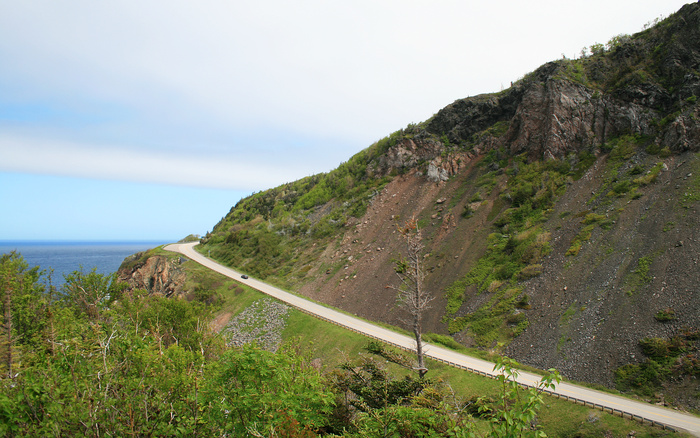
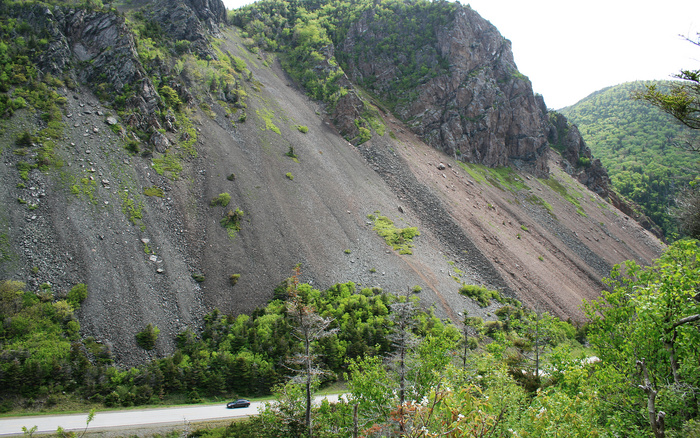
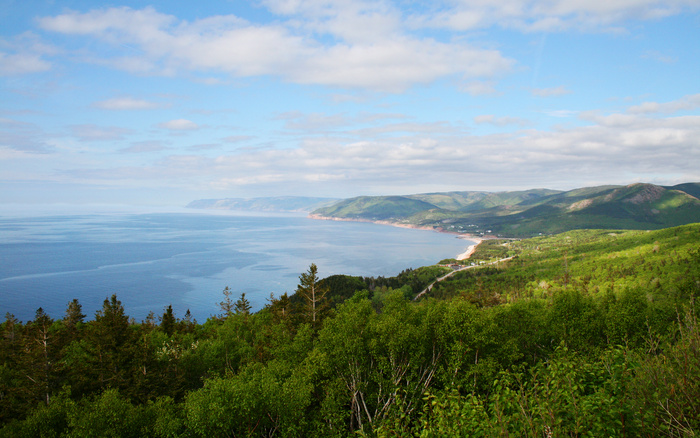
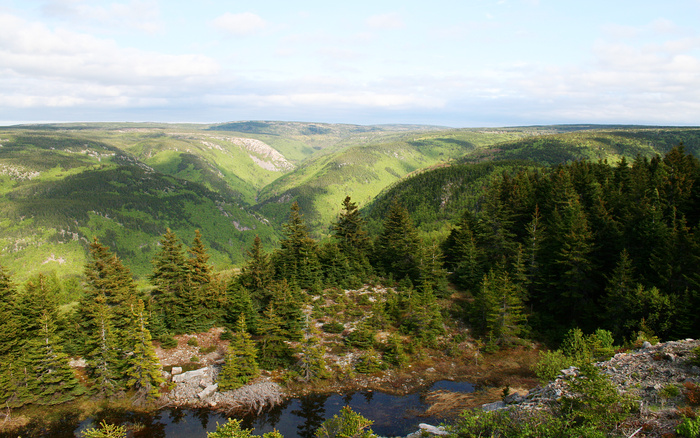
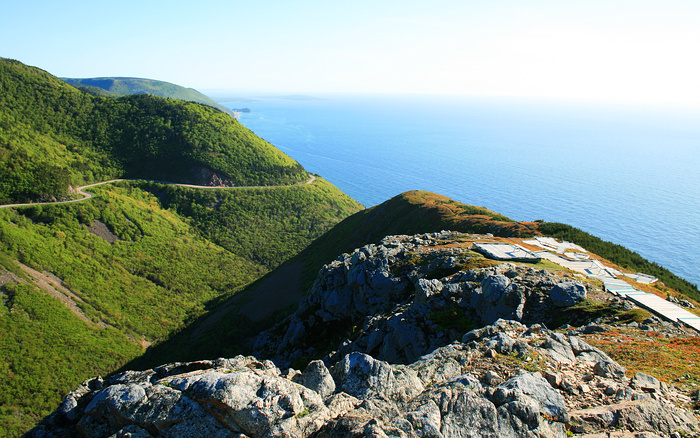
Elusive Field Birds
July 9th, 2015
They are who I came to Constance Bay Road looking for. They proved more challenging than the horses!
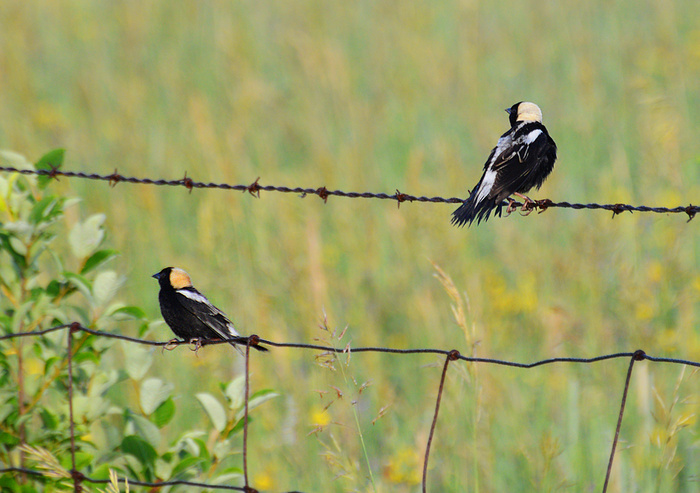
1680x1050 wallpaper
Near the intersection of Dunrobin and Constance Bay Roads is one of the best spots in our area for viewing grassland birds. The extensive horse-grazed (but not over-grazed) pastures there support an abundant population of various species, many of whom are in decline generally due to the loss of this kind of habitat. Three songs are ever-present in summer, one being the resonant chatter of Bobolinks (pronounced BAHbuhlinks), pictured above. To me it always sounds electronic, like a chattering R2-D2. They often sing in display flight, compensating for the lack of good high perches in their habitat of choice.
It seems like all of my (few) photo ops of Bobolinks happen in late spring and midsummer, when testosterone fever is high. One of these males had been chasing the other and both briefly landed on the fence nearby. You can see that the upper-right bird literally has his hackles up!
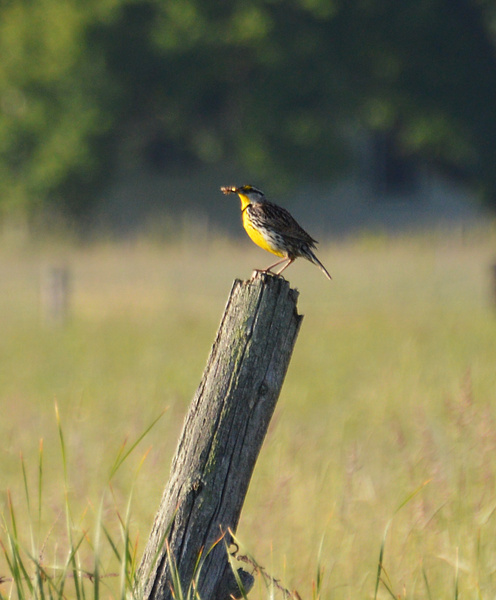
The bashful meadowlark--as close as I was able to get to one. I always dream that some day testosterone fever will land one of these beauties on a fence right next to me, but it hasn't happened yet. It seemed to be holding a fuzzy caterpillar, but was reluctant to bring its bounty to the nest with me watching, even from a good distance away.
Interestingly, meadowlarks camouflage really well--on the ground they keep their breasts down and all you see is the brown back that looks like a patch of dead grass, not the vivid yellow that is revealed when one perches upright on a post to display and sing. They sing a sweet melody that to me epitomizes the feeling of a lazy, hazy summer day.
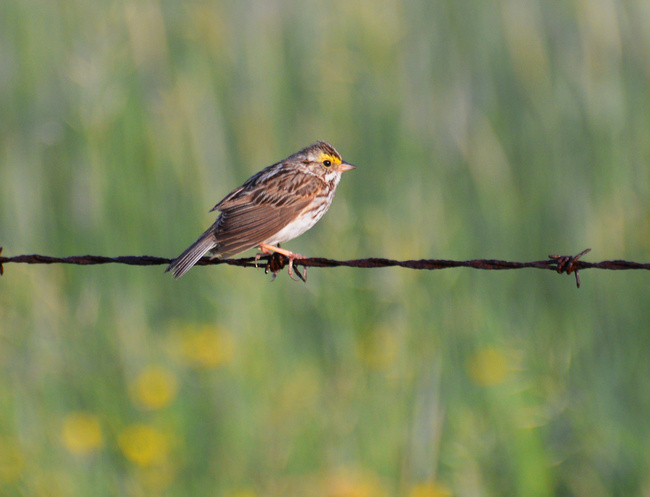
A Savannah Sparrow and its trademark yellow eyebrows. Their song has two trills, the first insect-like, the second like a dissolving mist. Often this song seems to rise right out of the grass. Sometimes it actually does; other times they're in plain view on the fence but you just don't notice them.
A fourth, rarer sound you might hear on Constance Bay Road is the surpassingly strange "wolf whistle" of the Upland Sandpiper. This is a declining species throughout North America. I'm very happy that there is still a place near Ottawa where I can go and have a chance of hearing it.
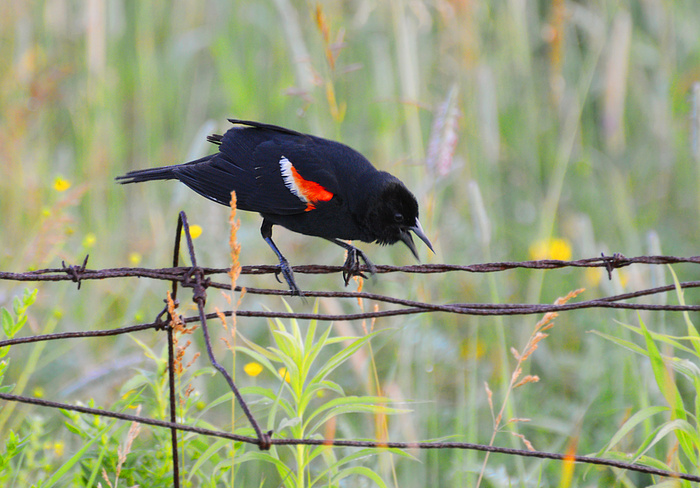
1680x1050 wallpaper
In the not-so-elusive category, this Red-Winged Blackbird. He must have had a fledgling or two hidden in the tall growth. Every time I walked past that spot he and his mate went nuts!
A set for ilanikhan
July 7th, 2015
...taken, appropriately enough, on Constance Bay Road! I had gone there in search of meadowlarks and bobolinks, but these horses stole the show.
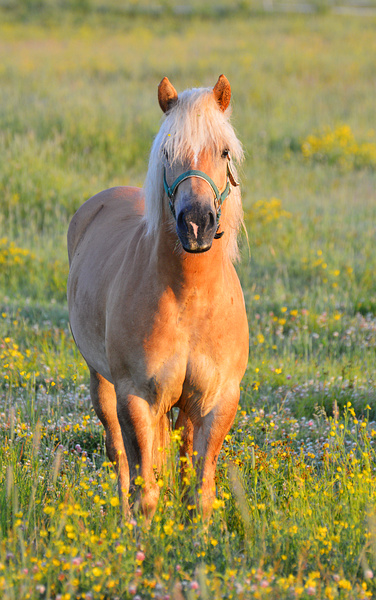
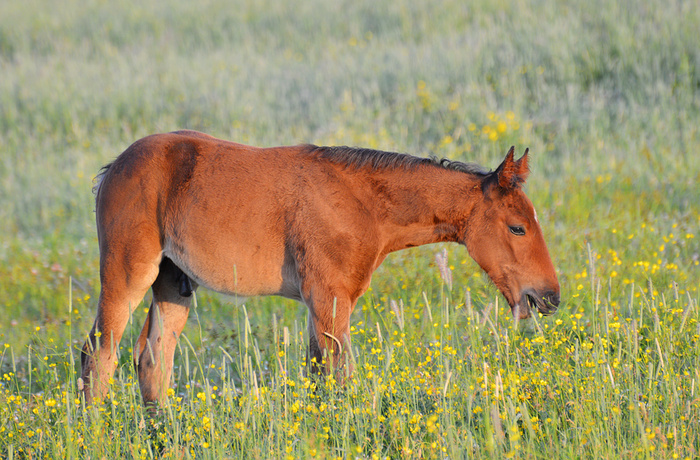
1680x1050 wallpaper
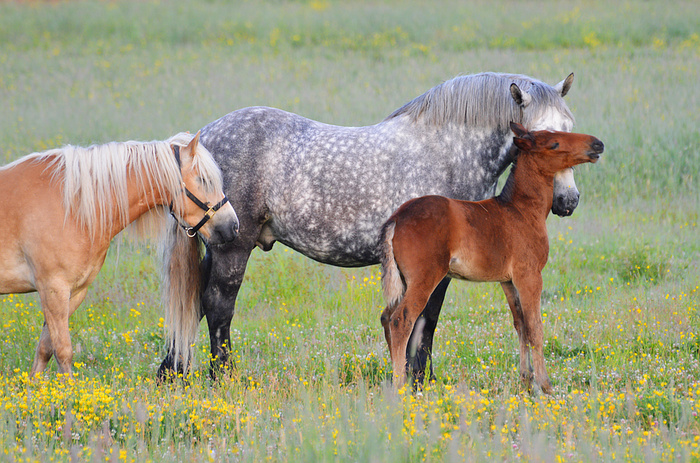
1680x1050 wallpaper
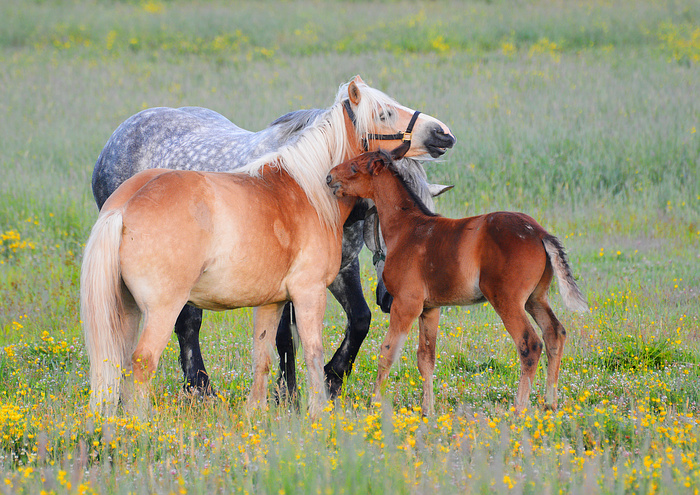
1680x1050 wallpaper
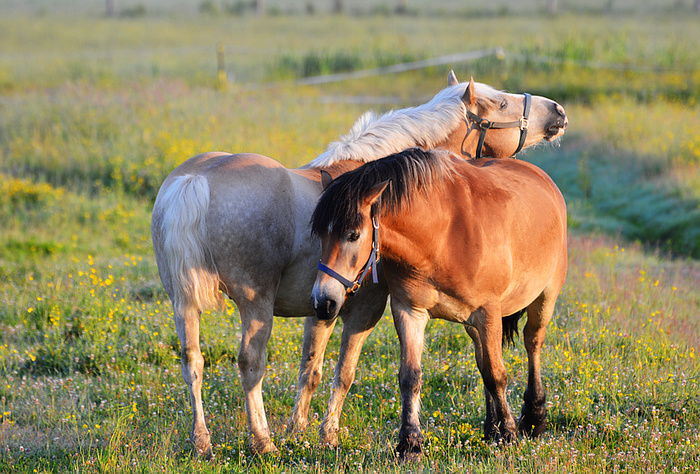
1680x1050 wallpaper
( Click for more )
Glace Bay Lifers
July 3rd, 2015
Early in our stay at Cape Breton we went to a place called Schooner Pond that I had found out about on the net--very much off the beaten tourist track, but known for good birding among the locals. It consisted of a couple of freshwater ponds as well as a long trail hugging the edge of sea cliffs. I will say, as an aside, that those sea cliffs are where I fell in love with Cape Breton. I will never forget the patchwork of vivid multicolored mosses nor the way the scent of juniper mingled with the smell of the sea. I will not forget the stunted trees bent 45 degrees back, and the gnarled, bleached-white skeletons of trees that finally gave up the fight. I remember thinking that I could camp out the rest of my life on those cliffs, those bleak and beautiful cliffs, and be happy. (Spiritually speaking, that is. Perhaps not physically speaking. It was a mite nippy.)
At any rate, we had good birding, including a mature Bald Eagle getting harassed by nesting blackbirds, a great view of a Black Scoter group swimming close to shore, and a pair of Northern Shovelers. As we were about to leave we ran into a fellow who gave us the universal sign--lifted his binoculars at us--and asked, "see anything good?" (No, the Bald Eagle didn't count. Cape Breton locals are about as blase about Bald Eagles as I am about Double-Crested Cormorants.) We were surprised to learn that the shovelers were a rarity in Cape Breton. In fact he had come looking specifically for them, chasing a report on eBird.
After some thought ("what would an Ottawan be interested in?") he suggested Glace Bay to us as a birding destination, and listed off some of what we might find there. He was not half-through with his list before I was sold. We went there about five days later and I hit pay dirt: two lifers in quick succession!
The first:
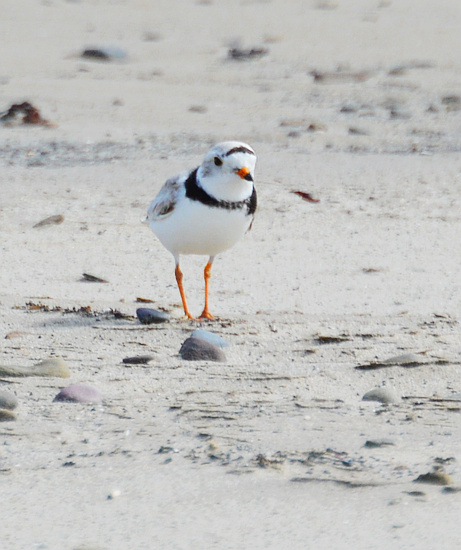
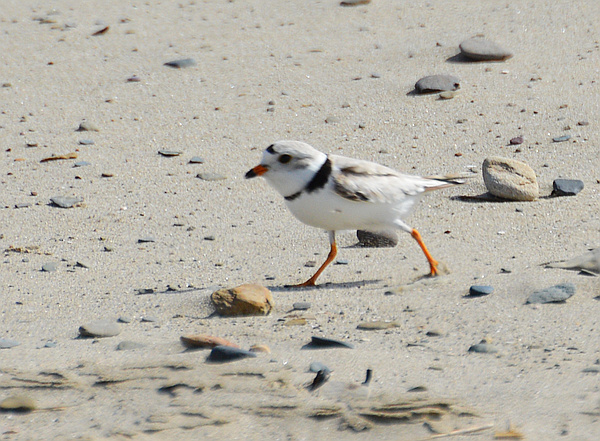
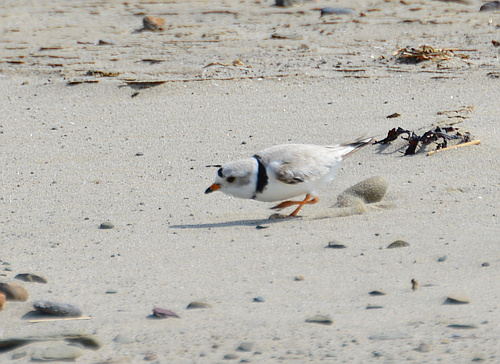
The above do not do justice to the sheer cuteness of a Piping Plover. I wish I'd taken video! It's a highly endangered species with only some 6500 of them left in the world. Unfortunately Piping Plovers nest on sandy outer beaches, a habitat that humans also love and tend to wreak havoc on (from the birds' point of view, anyway.) It doesn't take many beach-roving ATV's, or many pet dogs, before a Piping Plover nursery is defunct.
Glace Bay has one breeding pair. The individual we found could not have been more cooperative. I walked down the beach to the big "Piping Plovers nest here" sign, and (s)he was right in front of it! However, since I was dealing with an endangered species, I did not make any attempt to get closer to it to get better pictures.
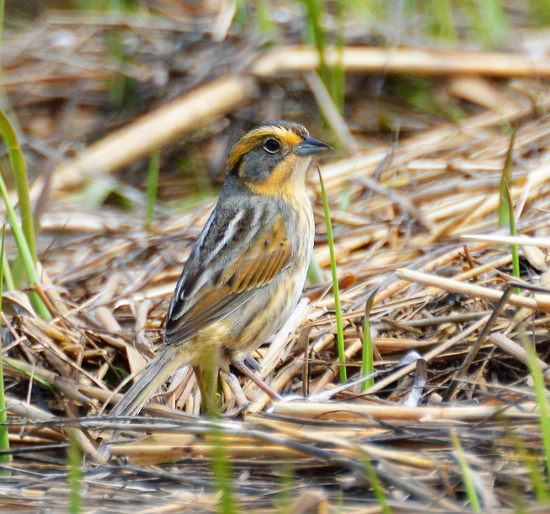
Nelson's Sparrow, my fourth and final lifer of the trip. This shy skulker breeds in salt marshes of the North Atlantic, as well as some freshwater marshes out west. Usually every autumn, in September and October, small numbers of Nelson's Sparrows migrate through Ottawa, but every year they've eluded me. A breeding Nelson's Sparrow is somewhat easier to uncover! It has an explosive little song like radio static ("kshhhhhhh"). [ETA: one website compares it to the sound of hot metal immersed in water, which is probably a better analogy!] Every time it sang, that explosive sound stood out amidst the soft, lispy voices of the Savannah Sparrows that surrounded it. I stalked it by the sound and eventually managed to get a clear view. I was surprised to then see it do a skysong: fly straight up in the air, "kshhhhhhh", then drop back down into the grass.
That's it for my vacation photos. Once I've developed some of my husband's many scenery photos, I may be able to show you why I fell in love with those cliffs at Schooner Pond.
Spruce Grouse
July 1st, 2015
We went hiking on the iconic Skyline Trail during our travels through Cape Breton Highlands National Park. It's known for its wildlife, particularly moose, although we didn't see any there. Actually I'd just been starting to think that the iconic Skyline Trail was kinda boring when we stumbled across this lady:
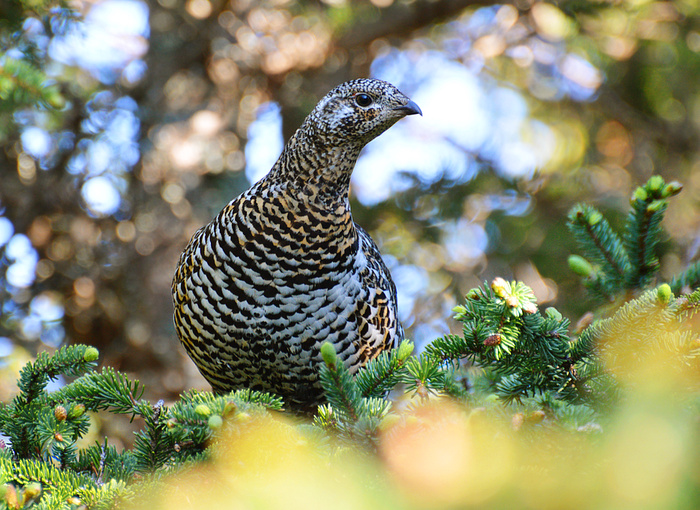
1680x1050 wallpaper
A female Spruce Grouse and my first lifer of the trip! (We did this hike before the Bird Islands tour.) Spruce Grouse live in northern conifer forests, where they subsist, primarily, on pine and spruce needles, plus the occasional invertebrate in summer. Munching spruce needles is what she was doing when we found her. I'd heard Spruce Grouse were tame, but I wasn't prepared for just how tame. It went something like this:
nosh nosh nosh nosh "Oh, are you two still here?" nosh nosh nosh "'Scuse me coming through--" **BUZZ** (as she flies one foot over our heads, dusting us and my camera with spruce pollen) nosh nosh nosh
Birds that blithely ignore humans (as opposed to either fearing them or seeking them for handouts) have always been my favorite kind. I guess I just like the reminder that not everything is about us! She was definitely a high point of my vacation. Although I think one of those pollen specks ended up on my sensor...
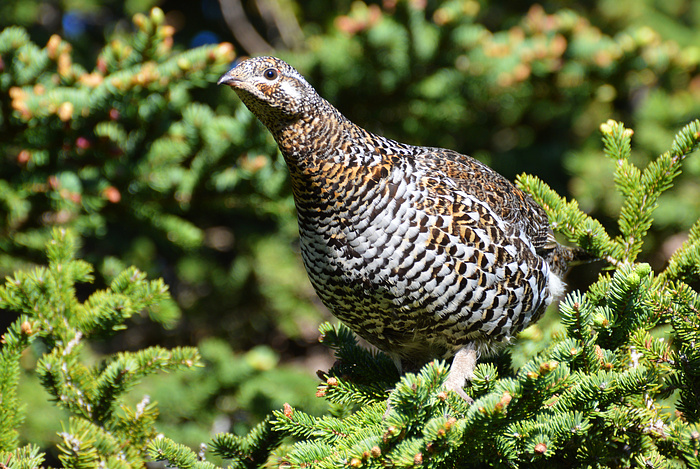
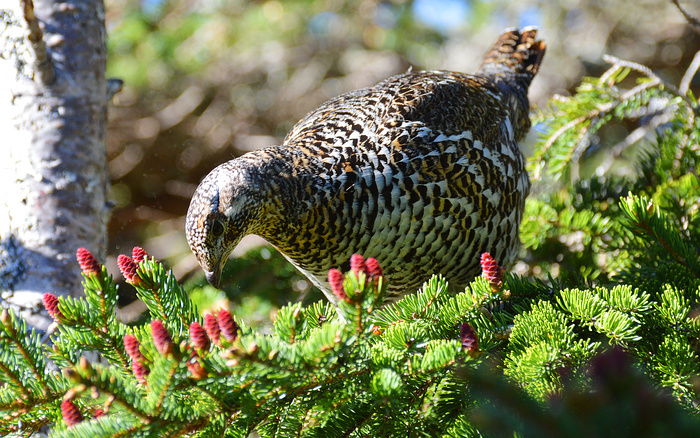
Reunited At Last
June 28th, 2015
A sequence with a mated pair of Razorbills.
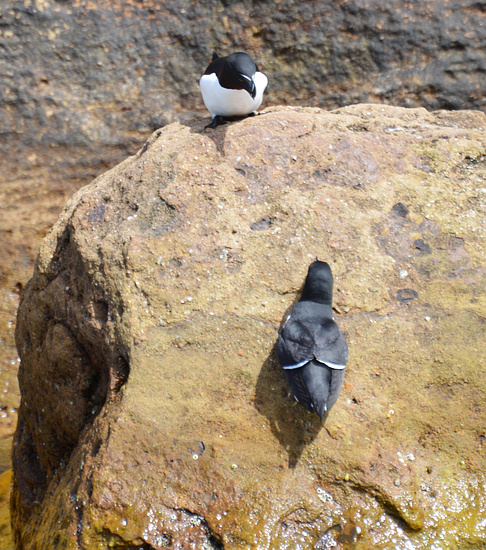
( Click to continue )
A Free Lunch
June 27th, 2015
We got some nice views of Bald Eagles during the boat tour as well. They trailed after the boat to ask for food, and the captain would obligingly toss fish out on the water for them. You had to be fast on the shutter: the retrieval was lightning-quick! One eagle came flying right up our wake after that looking for seconds. "Greedy git", Mike called it. But perhaps the first fish was for it, and the second was for its young back on the nest.
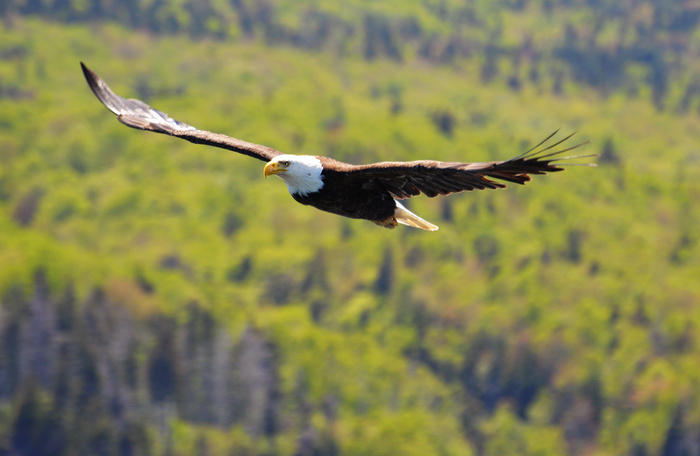
1680x1050 wallpaper
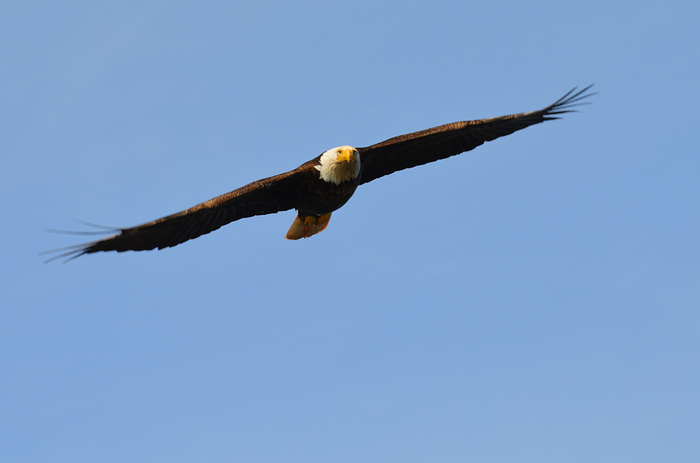
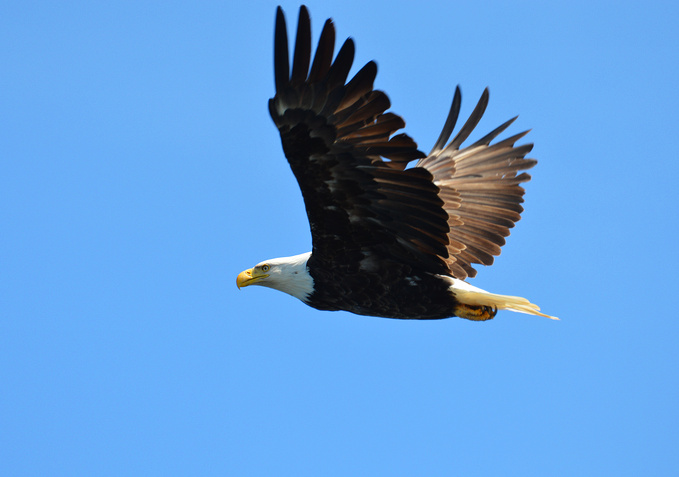
1680x1050 wallpaper
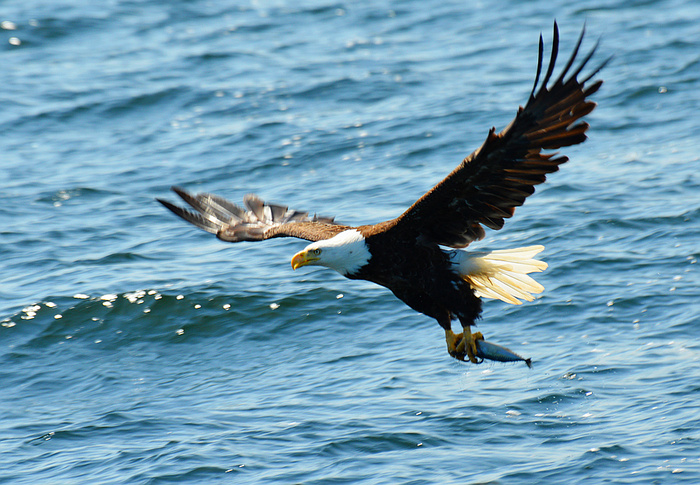
1680x1050 wallpaper
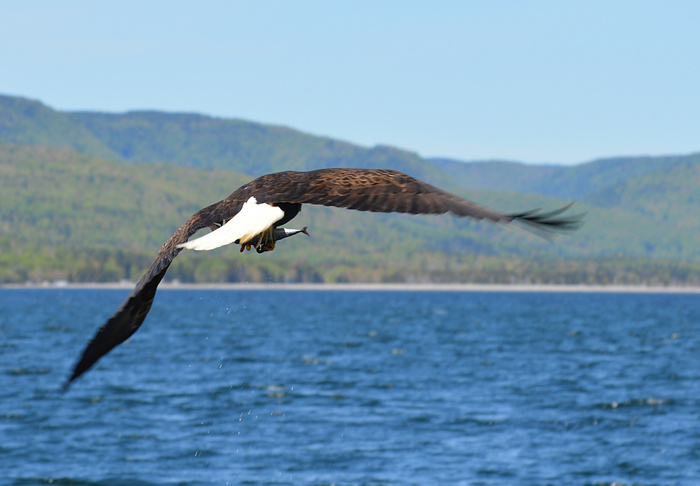
1680x1050 wallpaper
"Kthxbye!"
We saw one more eagle when we got to the colonies, this time a young one. He was perched right on the island. He had shrewdly chosen a nook with an overhanging ledge to protect him from dive-bombing gulls (hovering just out of frame here), who, like all the other nesting birds on the island, were Not Happy to see him.
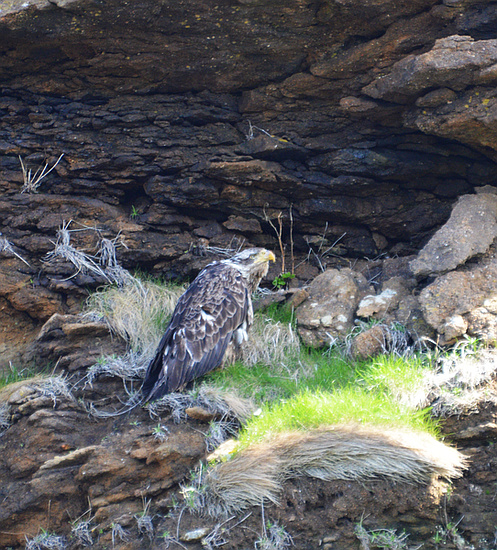
Bird Islands Miscellanea
June 25th, 2015
Black Guillemots are the third type of auk that breed around Cape Breton. Unlike the other two, they favor mainland cliffs as well, and we often saw them on the water when hiking along headlands. Their feet can be quite startlingly red. Even when looking down on them from tall cliffs, you can see their little red feet paddling underwater.
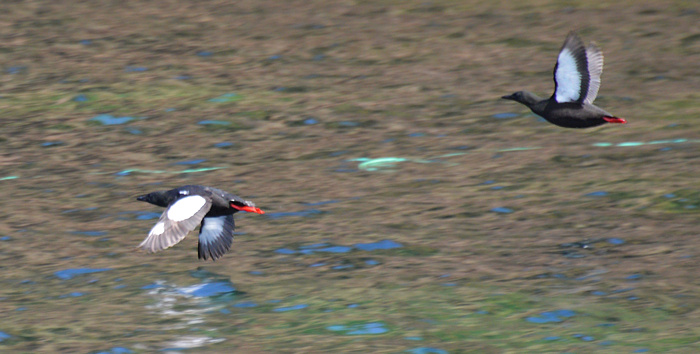
With a Razorbill on the right:
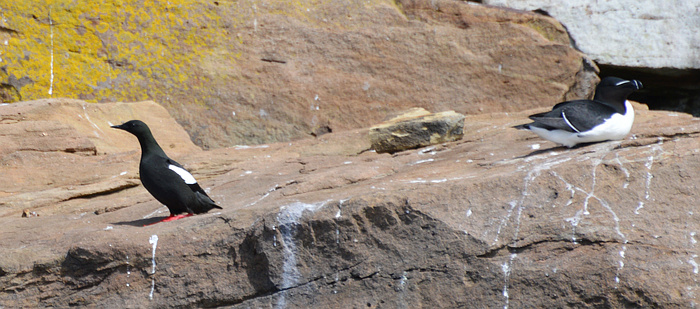
A Grey Seal made a brief appearance as we started the trip back.

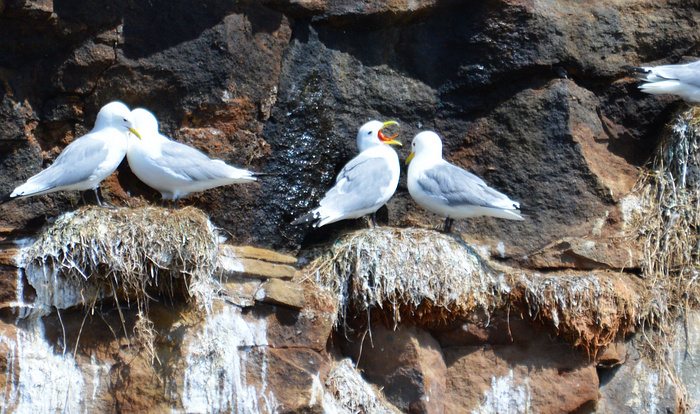
Black-Legged Kittiwake wonders: when is that egg gonna hatch already?
Great Cormorants
June 23rd, 2015
Double-Crested Cormorants are common in Ottawa and ten times more common throughout Cape Breton. Over-exposure has left me blase, although I still remember my wonderment the first time I saw one, nine years ago in Hog's Back Park: an all-black bird with feet like a duck, bill like a heron, wings like a vulture, ghostly blue eyes and two weird little tufts on its head. (Little did I know how rare it was to actually see those "double crests." In the years I've been birding since I've never seen it again.)
But the Great Cormorants I saw on this vacation gave me a fresh appreciation for cormorants--for the intensity and prehistoric weirdness of them. This is a much less common variety, at least in North America, that is only found on the north Atlantic coast from Maine to Newfoundland. Before this I'd only seen one once before at a great distance (in Gaspé.) They're larger than Double-Cresteds, and in breeding plumage really quite handsome. I was struck by the steel blue sheen they showed in good light, and the scalloped, mosaic-like pattern of their back feathers.
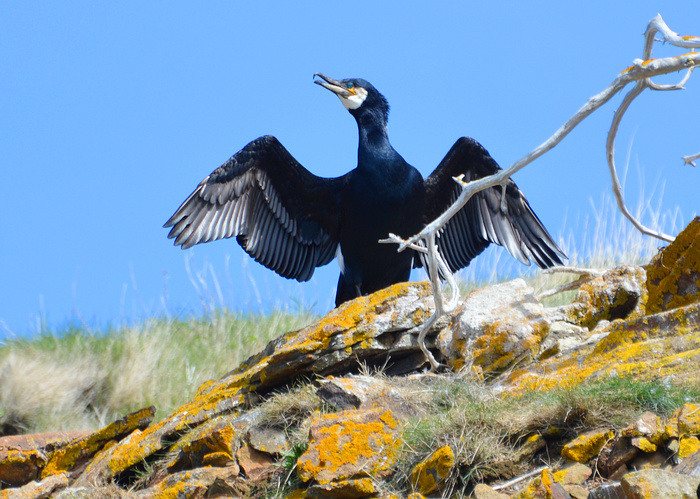
1680x1050 wallpaper (this one's best appreciated at high res!)
Cormorants stand like that for extended periods to dry their wings after diving for fish. Unlike most water birds, they don't have waterproof plumage.
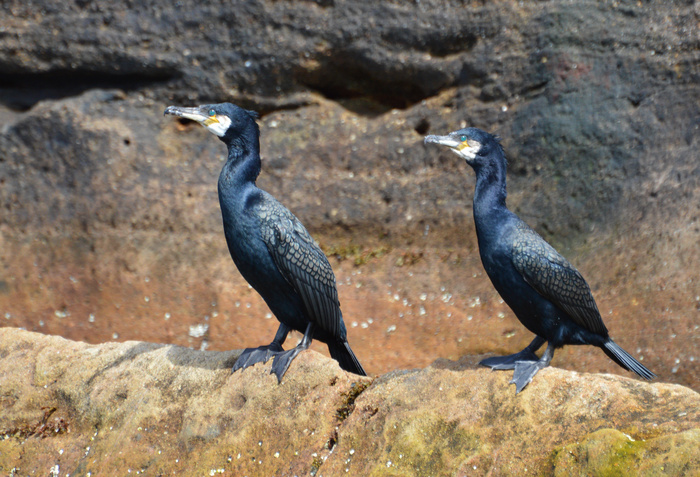
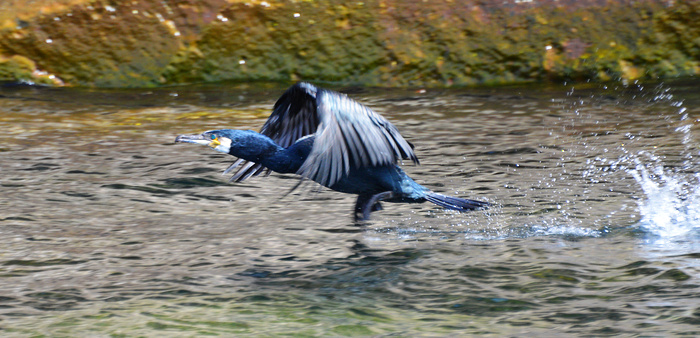
|
